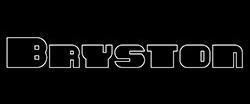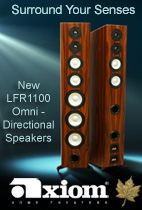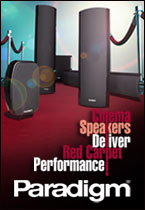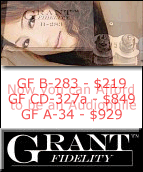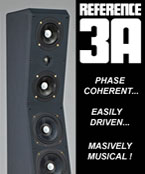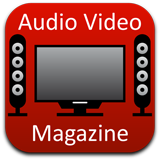
Radio in Canada is about to make waves unlike any we have heard before. In fact, you could go so far as to call them tidal waves of change. As the CRTC convenes their overall review of radio in an attempt to map out the road for the future, digital radio in various incarnations is the central topic. A series of new applications for the medium are being explored. At the same time that the industry is working to determine the role that DAB will play in the years to come, the concept of subscription radio has been added to the mix. A number of new cost effective feature-laden receivers are being planned for introduction in the near future. For radio fans, this is a sonic feast.
While DAB (Digital Audio Broadcasting) was initially contemplated as a replacement technology for AM/FM, its future clearly appears to rely on a revision of CRTC regulations to allow for introduction of DAB exclusive stations. Over 60 DAB versions of AM/FM stations are currently on air in Vancouver, Toronto (see chart for list of Toronto stations), Windsor, Montreal, and Ottawa. Seven Halifax DAB signals are also currently being field-tested. Applications have been made by the stations in Victoria.
Experience has taught us that being a high tech replacement technology is good, but not enough. Soaring DAB receiver sales in the U.K. (over 400,000 since June of last year) has demonstrated the importance of DAB exclusive stations in addition to the greatly improved fidelity and data display features. The first multilingual DAB only licensehas been granted for Toronto anda number of other applications are pending. Radio Canada/CBC has introduced its first experimental DAB station with their news/weather/traffic offering in Montreal. Look for some very progressive thinking and a number of exciting announcements from them in the near future.
And speaking of the future……if theCRTC buys into the concept of subscription radio, some very interesting alternatives for digital radio may be in store. The CRTC hearing on subscription radio is expected to be held by the Fall. Heads were turned recently when three applications were submitted by the filing date. These include the XM/Canadian Satellite Radio and Sirius/CBC/Standard satellite proposals along with the CHUM Ltd. terrestrial/DAB solution. It had been widely expected to be a two way race focusing on the discussion of satellite. But, CHUM took the opportunity to look at an alternative approach utilizing the terrestrial DAB infrastructure, some of which is already in place.
The initial consideration of subscription radio was triggered by the application made by Canadian Satellite Radio (CSR), a partnership with John Bitove Jr. and XM Satellite Radio based in Washington, D.C. CSR is promising 100 channels of nationwide music and information which will serve both urban and rural areas. The XM service in the U.S. has experienced substantial growth and currently boasts 1.5 million+ subscribers. An agreement to include XM receivers in GM vehicles has been a very positive force, one that is expected to be repeated in Canada. In order to compliment the existing channels, CSR is committed to building studios in both Toronto and Montreal. Moreover, Stewart Lyons of CSR proudly points to the Canadian content XM will be delivering not only to Canadians, but to listeners south of the border. VicePresident of Programming, Bob Mackowycz emphasizes the fact that XM will give independent artists a voice in a way that mainstream radio can’t. CSR doesn’t see itself as being in competition with conventional radio, but rather as a compliment to it. One that offers cutting edge niche programming that mass appeal stations can’t afford to deliver.
The CHUM subscription radio application involves a progressive rollout of urban centres that, by the end of the first term of license, will deliver 100+ commercial free DAB stations in a variety of formats with the much-touted DAB benefits… reliable reception, crystal clear sound, and a data display for song credits, weather, traffic, etc. Most importantly, the CHUM application stresses the fact they will fulfill or exceed the 35% CANCON requirements normally demanded by the CRTC. CHUM is rumoured to be speaking with other broadcasters and potential partners that could provide experience and expertise in subscription media services and wireless communications. It is presumed that the CHUM initiative would feature subsidized digital receivers which would offer both traditional free access for conventional DAB stations as well as their slate of conditional access stations for a $10 monthly subscription fee.
While we don’t yet have all of the details on the Sirius satellite application (with CBC and Standard as partners), expect a formidable presentation. The value of the CBC to Canadians is highly regarded by Heritage Canada and the CRTC. The CBC sided with Sirius, in part, due to their preference for its satellite configuration from a technical perspective. It is also worth noting that the Sirius application makes mention of seeking the development of combined satellite/DAB receivers. If this becomes technically possible, it would provide an ideal solution for the CBC which is heavily committed to DAB in urban areas. The satellite transmission would allow them to adequately cover all outlying areas.
Listeners have been demanding change and they are, in all likelihood, about to get it. More varied programming options, improved fidelity, display features, and interactivity are just some the features that are in store. From a receiver standpoint, I have seen and heard some of the bells and whistles on the new models being developed for Canada and they are addictive. For example, a new pause and rewind feature on the PG-01 from Intempo (with a 10 minute buffer) allows you to scroll back and hear the traffic report you missed or listen to that last song over again. Things just keep getting better.
Given that we are in the early stages if a DAB rollout, there haven’t been a great number of receivers available to date. You can find ongoing updates on the www.digitalradio.ca web site. Blaupunkt and Pioneer have produced good units for the auto aftermarket. In the high end category, Arcam offers an excellent home receiver, the DT81 for a suggested retail of $1995. It lists sensitivity of better than-91dB and a maximum input signal level of 0 dBm.
The breakthrough in terms of cost effective receivers came with the announcement that RadioShack Canada would be the first major chain to carry a line of DAB receivers. Late last year they began offering the Perstel DR101 (DAB/FM) personal portable for $99.99(Cdn.). This eliminated the price barrier for prospective consumers eager to experience digital radio. Check out RadioShack for new lines of DAB receivers in the upcoming months.
The new receivers promise greatly improved performance levels. DAB receivers have been flying off the shelves in the U.K. The top two models there are the Evoke-1 from Pure Digital and the PG-01 (nicknamed the Peggy) produced by Intempo. The fundamental difference between the U.K. and Canada is that our DAB stations broadcast on L-Band while they use Band III overseas. This necessitates a slightly different configuration. Intempo is currently designing a special version of the PG-01 for Canada along with the new KT-01 and the KTB-01. The latter three, which use the RadioScape DRE200-L module, promise impressive sensitivity levels of approx. -98dB or better. In addition to pause and rewind, the PG-01 offers FM/DAB, 5 watt stereo speakers, a blue LCD panel with 16X2 characters and a number of presets. Best of all is the fact that the unit is extremely user friendly. DAB stations are listed in alphabetical order…..no scrolling through frequencies as we are used to with FM and AM. The KT-01 (nicknamed Kitty) is being produced in hot pink while the KTB-01 (Kitty’s Boyfriend) features darker colours targeting females and males respectively. Based on the same module as the PG-01, these models offer comparable sensitivity, can be operated with batteries or a power cord, and feature 2 watt stereo speakers. While the price on all of these units has yet to be determined, the PG-01 is expected to sell for approx. $200 while the KT-01 and the KTB-01 will probably retail for something between $149-$179.
A number of other receivers scheduled for the Canadian market are currently in development around the world.
These days, the radio industry overall remains healthy with a 94.0% national weekly reach and 20.6 hours tuned weekly per capita (A18+, BBM Fall 2003). But standing still is simply not an option for a medium that prides itself as being the best option for those on the move. It would appear that a combination of DAB exclusive stations and subscription radio will offer valuable niche programming options which enhance the listeners experience without diminishing the vital day to day contribution of local broadcasters. Add to that exciting new digital receivers. . I think I hear the future….stay tuned.
Written by David Bray, Sr. Vice President, Creative Director/Media Director of Hennessy & Bray Communications
Click here to discuss this article on the CANADA HiFi Forum

